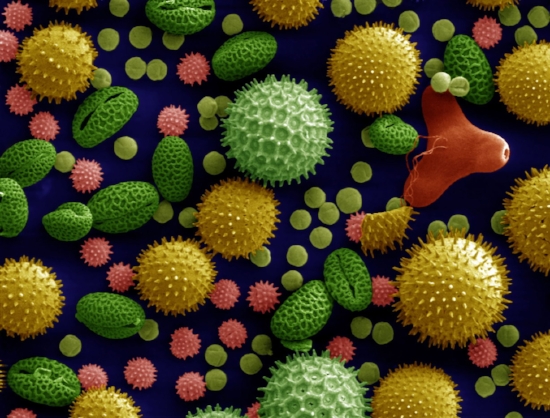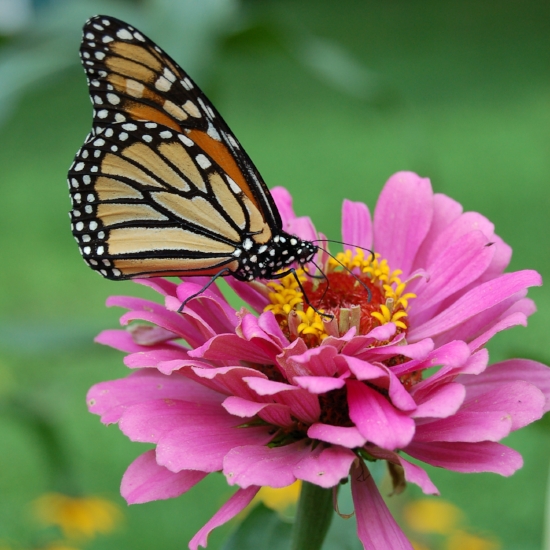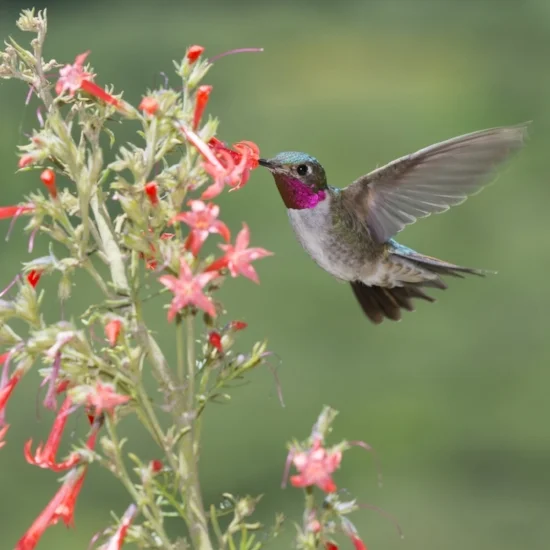Though we tend to think of a “flower” as any plant that looks good in a vase, calling a plant a flower is kind of like calling a human being an elbow. A flower is just a part of a plant. Roses, tulips, and daisies are all thought of just as flowers, but they also have leaves, stems, and roots. No one brings their mom a bouquet of maple trees, saguaro cacti, and grasses, but all of them have flowers during part of the year. Even poison ivy has flowers.
Flowers are found on all sorts of plants, but not all plants have them. Moss, ferns, and pine trees, for example, don’t have flowers, but a lot of plants do.
Plants have flowers because they need to make seeds. In order to make seeds, pretty much all plants first need to get pollen from another plant of the same species. A plant can’t just walk over to another plant and say, "Hey! Give me some pollen!" Instead, they have to get their pollen delivered.
They don’t all get their pollen delivered the same way, though.
Pine trees, which don’t have flowers, use the wind as their delivery service. They make pollen in their pine cones and then dump tons of it into the air. The trees depend on the wind to spread their pollen all over the place, in hopes that some of the pollen will land on the pine cone of another tree of the same species, so that tree can then make some seeds.
These pine cones look yellow because they are about to bombard their local area with pollen.
Wind is not the most precise way to deliver pollen. It’s kind of like inviting your friends to your birthday party by having a plane drop a bunch of invitations all over your town in hopes that some of the invitations hit your friends in the head. Wind delivery works for pine trees because they make so much pollen that it ends up covering pretty much everything. If you live in a state that has a lot of pine trees, like I did when I used to live in South Carolina, you may have noticed that everything, particularly your car and mud puddles, turns yellowish in the spring. That yellow stuff is all pine tree pollen that missed the pine cones.
Plants with flowers have a different delivery service, one that does not cover your entire town with pollen. Flowering plants pay animals to deliver their pollen. They do this through their flowers.
A flower is a free all-you-can-eat buffet for animals like bees, butterflies, and hummingbirds. Many flowers are full of nectar, which is basically just a lot of sugar in water (in other words, juice). Flowers with nectar are kind of like a juice box, except the hummingbirds and bugs bring their own straw. Nectar provides the bugs and hummingbirds that drink it with a lot of energy. Some pollinators, such as bees, also eat the pollen in flowers, because pollen is a good source of protein.
The plants are happy for these animals to eat the nectar and pollen they make, because as the pollinator eats, the flower dumps some pollen on the pollinator’s head and body. Then, when the pollinator flies to another flower to eat, some of the pollen will fall into that flower and then: mission accomplished. The pollen is delivered and seeds can be made.
Flowers smell nice and are brightly colored because they are trying desperately to get pollinators’ attention. The colors and smells of flowers are basically advertisements that let birds and bees know that if they stick their head in the flower, they will get free food. Then they get tricked into becoming a pollen delivery-person.
Flowers are made to get attention, but their ability to get human attention is just a byproduct. The attention flowers really want is from bees, butterflies, hummingbirds, and some other small animals. Plants with flowers can’t live without these animals. And these animals can’t live without flowers.
To learn more about flowers and pollinators, read my book A Day on the Mountain.
Online references and resources
National Park Service. "Pine Pollen Season."
https://www.nps.gov/romo/pine_pollen.htm
Scientific American. "Why do flowers have scents?"
https://www.scientificamerican.com/article/why-do-flowers-have-scent/
USDA. "What is pollination?"
https://www.fs.fed.us/wildflowers/pollinators/What_is_Pollination/index.shtml
Photos and Images
Click the photos and images used above to find their sources.








